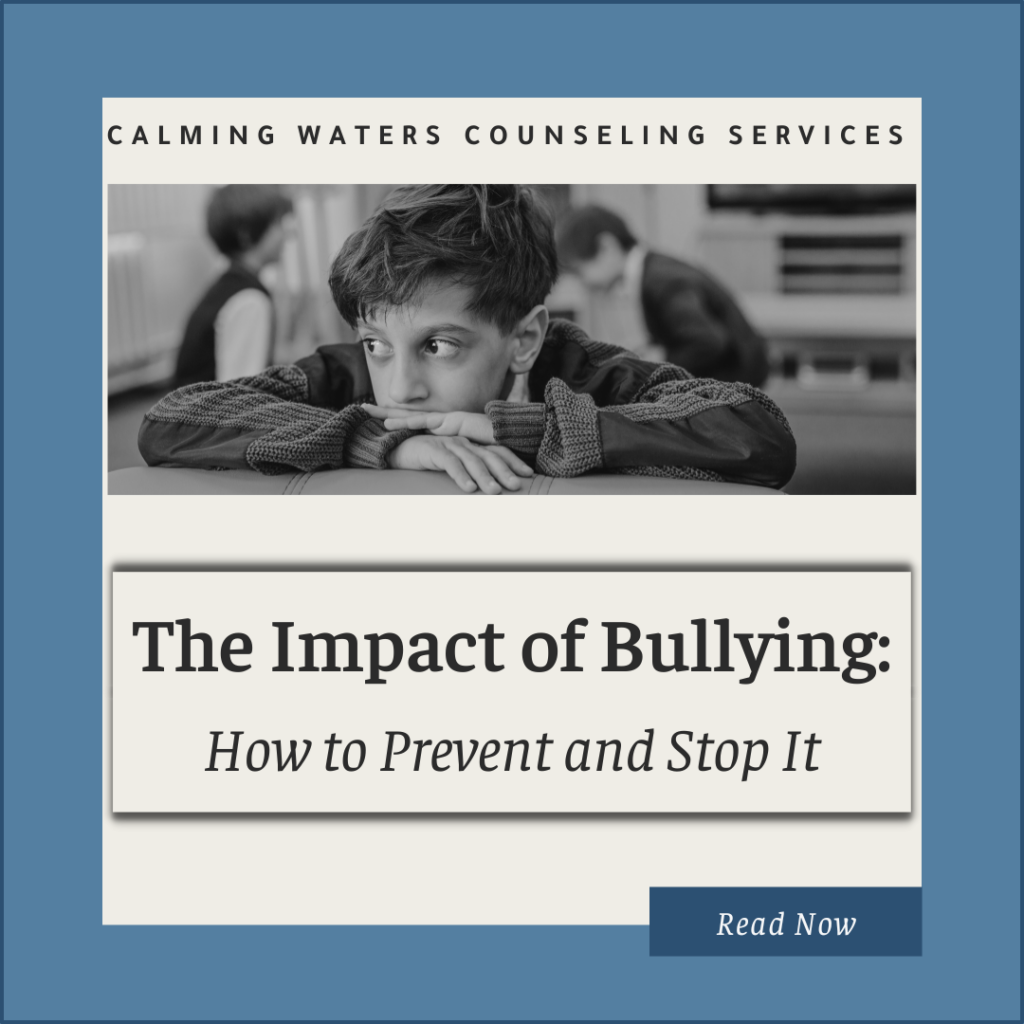
The Impact of Bullying: How to Prevent and Stop It
There was a female high school freshman who played soccer for the girls varsity squad. She was tall and lanky, had braces and a pretty unique personality. She was a starting defender who, despite how small she looked, had earned herself the nickname “Bruiser.” She was gritty and tough on the field, but off the field she was kind and always making those around her laugh.
One particular week, she wasn’t feeling great. Her developmental changes left her with a lot of discomfort, enough that she didn’t feel like she could play in the away match that week, so she asked her coach to bench her. So, she sat that one game out, but cheered her team all the way to victory.
After away games, they always stopped at a restaurant to eat as a team. She rode the bus to the fast food chain, went in with the team, ordered her food, and sat down at a table to eat.
When she sat down, her teammates around her were looking at her strangely and smiling when all of a sudden, they all took feminine products out of their pockets and threw them at her. Right in the middle of the restaurant in front of the whole team and other patrons who were at the restaurant at the time.
If you’re wondering if this is a true story, it is.
It’s actually mine.
The reason I share the anecdotal story is because it’s a great example of what bullying can look like.
I’ll be the first to admit that my formative years were fraught with awkwardness and changes beyond my control, but I don’t think I ever expected to be publicly humiliated for it.
It’s also a reminder that bullying has been ever present for…well forever. Just watch any 80’s romcom and the whole plot is centered around the kid who always gets picked on or shoved in a locker.
These days, bullying may not look quite this obvious and, unfortunately, has become more “sophisticated” and nuanced with the age of technology.
Let’s take a deeper dive into what bullying looks like now and some common misconceptions about bullying.
What Does Bullying Look Like?
Under the big umbrella, bullying includes:
- Physical bullying
- Verbal bullying
- Relational bullying
- Cyberbullying
- Sexual bullying
- Prejudicial bullying
The thing is, bullying can start very subtly and be hard to catch. When you have deeply feeling kids or angsty teens, sometimes it is really hard to sort through their intense emotions to see what lies at the heart of their troubles.
But as parents, there are some telltale signs that may help lead you to an answer like:
- Bruises and/or marks on the body and avoidance talking about where they came from
- Increased anxiety about going to school
- Withdrawn or depressive behaviors
Of course, there could be factors other than bullying that can cause the above changes, but it is important to normalize these conversations to at least rule it out. It is always a good idea to have a regular check-in with your kids, if for no other reason than to let them know that you are there for them if they want to talk.
Two Most Common Misconceptions About Bullying:
There should be physical marks or scars.
Well not always, take my story for example. I wasn’t physically harmed, but endured the mental and emotional side of bullying in that incident. This isn’t a comparison of one being worse than the other, it’s a reminder that kids can be harmed by forms of bullying that affect their mind, body, and spirit.
“Well, kids will be kids!”
I remember hearing this growing up and still sometimes do today, and goodness do I have some feelings about it. This particular statement minimizes the dangers of bullying or kids just “playing around.” It also gives a justification of the bullying behaviors and indirectly exonerates the bully.
Other responses that minimize bullying behaviors are:
- “You don’t want to be a tattletale”
- “Don’t be dramatic” or
- “It’s not a big deal”
You get the picture here.
I do think people mean well when they make these statements and aren’t intentionally trying to be hurtful or minimize a child’s experience. I simply think that bullying is a tough topic to talk about, so finding the right things to say can be hard.
That is why it is important to advocate for what bullying is, what it looks like, and how to prevent or stop it. Part of this advocacy includes shifting away from these oversimplified phrases so we don’t disregard the seriousness of the issue.
Who is Affected by Bullying?
Everyone! Yes, children, teens, and even adults can experience bullying. According to the National Center for Educational Statistics, 2019, one out of every five (20.2%) of students reported being bullied.
For adults, between 31% and 45% of Americans say they have experienced some form of bullying as adults.
The US Workplace Bullying Survey conducted in June 2017 showed that 70% of bullies in the workplace are men and 60% of the targets are women.
29% of targets remain silent about their experiences.
I wish I could say those numbers surprise me, but they don’t. As we have become driven by technology and social media platforms, bullying has become…easier. It’s easy to sit behind a screen and type a mean comment and then walk away scott free.
With cyberbullying being overwhelmingly prevalent, it is important to limit/monitor your teens’ technology use. If your teen struggles with cyberbullying or you suspect they are, it is important to monitor screen time for their safety.
How Does Bullying Affect People’s Mental Health?
Bullying affects people in several ways and often has a domino effect on the mental health of an individual.
Bullying can lead to:
- Low self-esteem
- Doubting oneself and one’s identity
- Increased feelings, or development of anxiety and depression.
Which can then lead to:
- Social withdrawal
- Substance abuse
- Difficulties at school or work
- Suicide
I’m Being Bullied, What Should I Do?
You really have 3 options to solve the problem yourself before seeking help and support from someone else: ignore, walk away, or stand up to the bully.
It is important for you to try to stand up for yourself (non aggressively) and reclaim your power. Not only does this strip the bully of their power, but you are also building your self-esteem and independence.
While this is not guaranteed to work, it is suggested as the first line of action before going to the next option.
If the bullying continues beyond that, it is important to get an adult involved to provide additional support.
A good starting place is to contact a licensed therapist or primary care provider to help you with guidance on how to handle the bully. These are trained professionals who can assess the situation objectively and who know when it is appropriate to involve more parties.
If you experience bullying in the workplace, talk to HR, which is often confidential and anonymous, or a trustworthy and supportive colleague.
When experiencing bullying at school or during extracurricular activities, lean on teachers, school counselors and administration, or coaches.
You should also work on confidence building skills. Here are 10 areas to focus on if you, a loved one, or a child is struggling with being bullied:
- Encourage self-expression
- Practice assertiveness skills
- Build self-esteem
- Practice conflict resolution skills
- Support and empower the person
- Practice self-defense techniques
- Foster independence
- Promote positive body image
- Encourage positive relationships
- Seek outside support
I’m Really Struggling with Being Bullied
Our team is here for you and is ready to help you heal and find your voice and your confidence again. We know selecting a therapist or any healthcare provider is very a personal choice. Our providers are experienced in working with individuals from diverse backgrounds and cultures, ensuring that you receive care that is both inclusive and respectful. We offer services at two locations as well as in the virtual environment to ensure you feel comfortable when you connect with us. Head to our About page to see the bios of each of our clinicians and then Contact us when you are ready. You can conquer what feels like an uphill battle with a bully and we are committed to helping you achieve a happier, and more confident life.
Additional Resources
If you find your mental health declining as a result of bullying, checkout these resources below that can provide immediate assistance.
- 9-8-8 The National Suicide Prevention Lifeline. This lifeline is available to you 24/7, providing support and assistance from a trained counselor. If you are having suicidal thoughts dial 988 or text MHA to 741741 to receive guidance form the Crisis Text Line.
- The Trevor Project. This is a great 24/7 resource for the people and youth in the LGBTQ+ community. Dial 1-866-488-7386 or text START to 678678.
- StopBullying.gov provides information from several agencies related to bullying, bullying prevention, and bullying response.
- Teach.com offers information for teachers and parents related to bullying in children.
- Committee for Children Provides kids and adults with resources to understand what bullying looks like and how to stop it.

